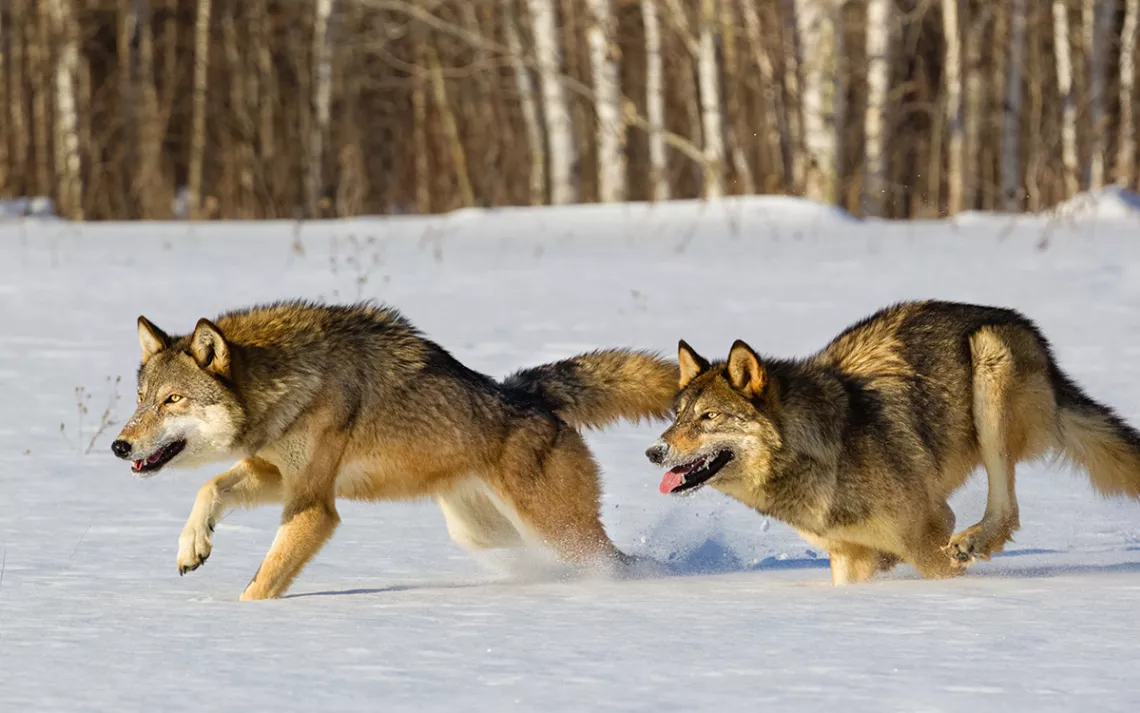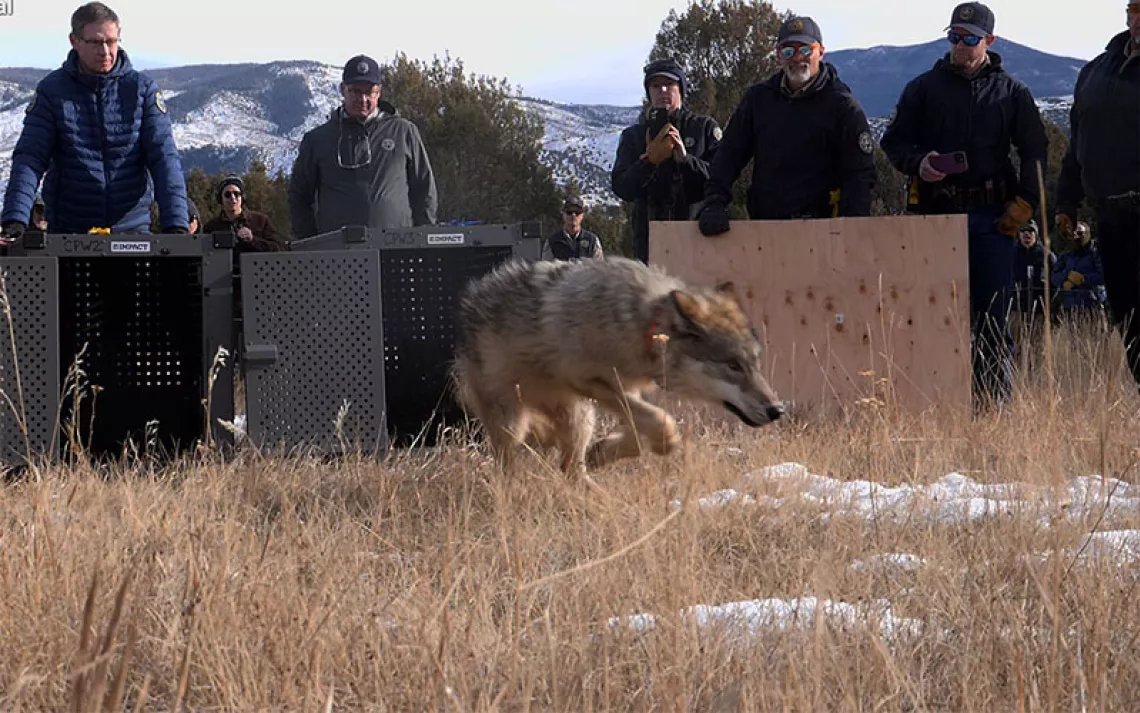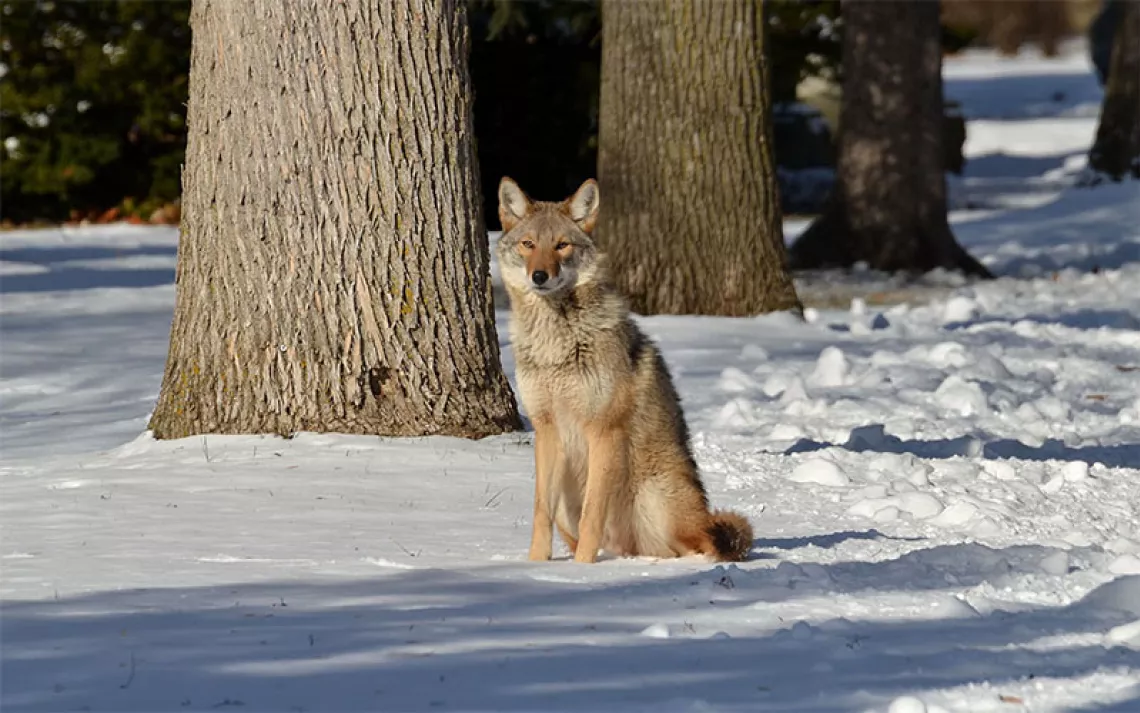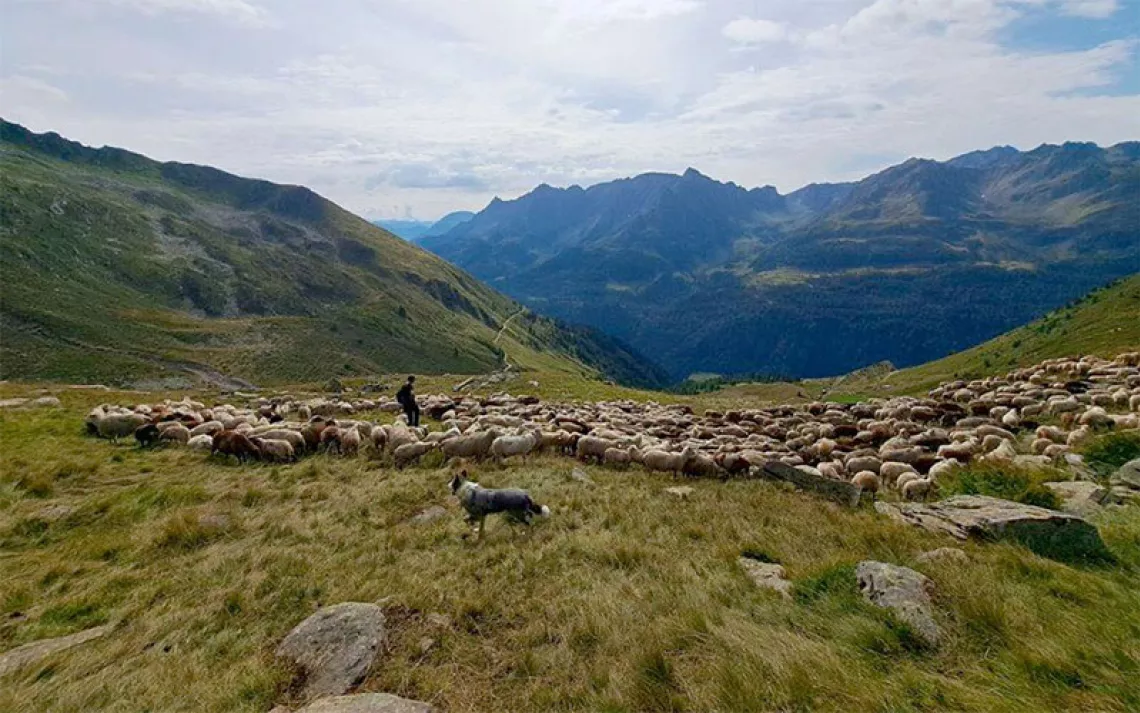How to Live With Wolves
Wolf advocates have ideas for how the Great Lakes states can make wolf plans better

Photo by KenCanning/iStock
|Gray wolves running in the snow.
When wolves live near people, there’s bound to be a certain amount of friction. Personal safety, protecting livestock, and perceived impacts on game species are among the considerations for people who live in wolf country. In the Great Lakes region, wolves are listed under the Endangered Species Act, so limiting conflict with people is up to the federal government. But the three states in the region where wolves live are preparing for eventual delisting, at which point they will take over wolf management. In December, both Minnesota and Michigan released new 10-year wolf management plans, and Wisconsin expects to finalize its plan by February.
Since these states last updated their plans, in some cases over two decades ago, much has changed in what scientists know about wolf biology and how the public feels about wolves. For instance, wildlife managers now know that killing wolves can actually increase livestock predation by removing pack leaders and leaving inexperienced wolves to fend for themselves. They also know that wolves have personalities. And they’re also more aware of coexistence strategies that don’t require killing as the primary tool for preventing conflict.
While the new plans include some of this updated science, consultation with tribes, and incorporation of nonlethal measures, conservationists still see room for improvement. Here are five things wolf advocates think state wildlife agencies need to add to their management plans.
Reflect people's love of wolves
All three states have conducted public attitude surveys in recent years. In Wisconsin, three-quarters of respondents agreed that “wolves are special animals that deserve our admiration.” In neighboring Minnesota, nearly half of the general population opposed a hunting season, and almost 60 percent opposed trapping. Seventy percent of respondents had a positive attitude toward wolves.
Similar positive attitudes were seen in Michigan, where over 80 percent of respondents said wolves have an inherent right to exist, and just over 70 percent agreed that wolves are an essential part of the state ecosystem. Nearly half of the respondents would like to see the wolf population increase.
“The evidence is clear—American values are shifting and now favor coexistence,” said Nancy Warren, executive director and Great Lakes regional director for the National Wolfwatcher Coalition. “My vision for a wolf management plan would be to rename it—call it a wolf coexistence plan.”
Promote nonlethal tools
Despite clear indications that the majority of people like wolves, states still focus on killing wolves as the primary way to deal with problem animals, even when nonlethal measures have proven effective.
The draft Minnesota plan states, “[w]hen verified incidents do occur, lethal control and reimbursement of financial losses comprise the current response, augmented by nonlethal methods as appropriate.” Wolf advocates like Amaroq Weiss, senior wolf advocate at the Center for Biological Diversity, would like to see that process flipped.
Among the nonlethal tools at the disposal of ranchers and state agencies are fladry—strips of fabric hung from an electric fence around animal pens, range riders who keep watch over the livestock, and the use of guard dogs. The simple addition of fencing around the seven-mile perimeter of a farm in northern Minnesota has recently been shown to reduce conflict. Since the fence was installed two years ago, no wolves have attacked sheep or been seen on the farm.
“We'd like to see them prioritize the use of the nonlethal tools to prevent and halt conflicts,” Weiss said. “The science shows that hunters and trappers randomly killing wolves doesn't help out with livestock conflicts because you're not impacting the wolves that were involved in the conflict. You're just randomly killing wolves.”
Include ethical considerations
Throughout all three plans, wolves are often viewed within a context of abundance, minimums, and harvest limits. In Minnesota, the Department of Natural Resources would like to maintain a population of at least 1,600 wolves; in Michigan, at least 200. In Wisconsin, which scraped a population target altogether, the number of wolves slated to be killed is based on previous years of hunting.
While numerically, these numbers may sustain the population, conservation groups say this style of management ignores both the ecological role of wolves and the other values that people attribute to them. Instead, they argue that any new plan should do more to consider the broader appreciation of wolves on the landscape, such as cultural significance to tribes and their intrinsic right to live in the wild, and also highlight the positive impacts they have on the landscape.
“I think we would say that, regardless of whether there's scientific studies that predict that killing X number of wolves will cause a population decline, we believe wolves have value and are ethically important in their own right,” said Amanda Wight, the wildlife protection manager at the Humane Society of the United States. “The burden of proof should be on those who want to kill wolves to justify that killing.”
Educate the public
One of the justifications for killing wolves is to protect declining populations of herbivores like deer and elk. But many studies show that wolves don’t decimate entire populations of prey. Instead, state wildlife agencies are reporting herbivore population growth, not decline. Similarly, ranchers often say that wolves are destroying their way of life by eating cattle, but according to reports by the US Department of Agriculture, wolves are responsible for less than 0.1 percent of livestock deaths.
Many conservation groups hope that state agencies will use such resources to teach the public how wolves actually impact landscapes, the benefits they bring to ecosystems, and the complex nature of wolf behavior. The presence of wolves, for example, has been shown to reduce deer-related traffic accidents, limit overbrowsing, and even mitigate chronic wasting disease.
“I've expressed to [the MN DNR] that they should be doing more,” said Michelle Valadez, a wildlife advocate based in Minnesota. “I said, 'You put a lot of effort into having programs and classes on hunting and fishing and tracking, but you do nothing to educate people on the wolves.' And so that was one of the things I really looked forward to, and even though they added some wording to it, it's basically the same as it's always been.”
Choose words wisely
How agencies talk about wolves is frequently rooted in colonial views about the natural world. To help state agencies put together exemplary management plans, a cohort of conservation groups that include the Center for Biological Diversity, the Humane Society, and the Wolfwatcher Coalition put out a Wolf Conservation Planning document that outlines steps that advocates and state wildlife agencies might take to better their wolf management.
In this document, they have a section called “Words Matter.” Terms such as lethal removal, depredation, and harvest are outdated, they argue, and don’t accurately describe what wolf management is or should be. For example, harvest refers to picking a crop or collecting something for human consumption. Wolves are neither crops nor food, but sentient animals with complex social structures.
Also, the term depredation is a moral judgment, said Weiss, the wolf advocate for the Center for Biological Diversity. It connotes marauding or pillaging. She advises that predation, a natural biological process, should be used in management plans.
“The euphemisms do not accurately convey what is taking place. They prevent ethics-based consideration of what actions to take, mislead the public, and stigmatize wolves with negative moral connotations,” reads an appendix to Wolf Conservation Planning. “Words matter. The words we use are key to changing paradigms for wolf recovery and stewardship of wolves.”
 The Magazine of The Sierra Club
The Magazine of The Sierra Club



